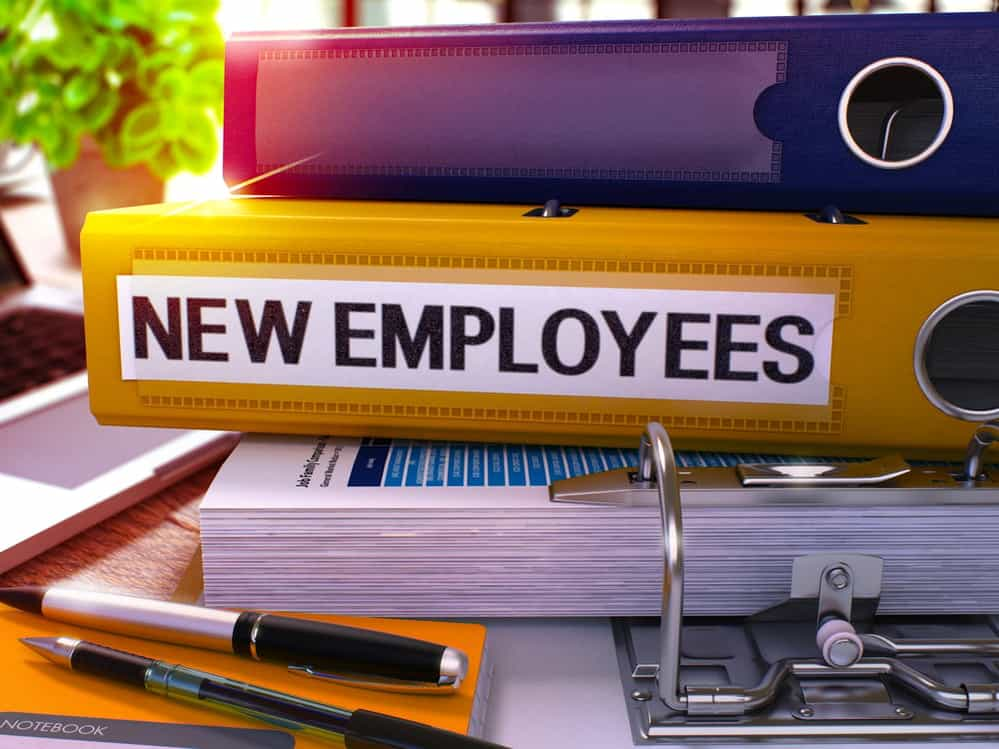How And Why Does Your Company Need To Get On Board With Automated Employee Onboarding?
 Omer Usanmaz
·
8 minute read
Omer Usanmaz
·
8 minute read
Employee onboarding programs can be the deciding factor for your new hire to stay in your company long enough, develop allegiance and improve their productivity. Onboarding is a subtle but impactful invitation for your new employees to take up your company's objectives as their own. However, manual onboarding requires efforts from Management, Finance, Executive and HR teams. Therefore, an increasing number of organizations are channeling the power of contemporary software and applications to automate the hire onboarding process. And according to the study conducted by Kronos Incorporated, 36% of Human Resource professionals believe that the inability to integrate automation into the onboarding workflow adversely affects the new employee experience of your company and that too within the critical first few weeks of the onboarding process. Therefore, this article aims to provide you with extensive intel on how an automated employee onboarding program can help your company and then suggest incorporating them.
Four Phases of Onboarding
Any effective onboarding process is strategically divided into four phases or an onboarding checklist.
Phase One: Orientation
Orientation is the initial juncture that introduces your new employee to your company, the workforce, and the senior leadership. The orientation may differ according to the company. Still, this phase generally provides the new hire with the senior leader welcome, compliance education, and a preview of the company culture, values, and history. During this phase, most companies will also clarify their steps to encourage diversity and inclusion. But the key here is not to stop the onboarding with the orientation.
Phase Two: Role Training
Fresh out of orientation, the new hires will be taught the day-to-day affairs they will be responsible for. The role training may also differ according to the company. Still, it typically involves the information that an employee will need to be effective on the job, such as operational training, safety training, information about how their work will be assessed, etc. It is proven that employees who have a clear perspective of their duties tend to do better at work than those who don't.
Phase Three: Transition
The third phase will begin only when the new employee is transitioning to a permanent position in your company. Here the buzzword is development. During this phase, the onus guiding employee productivity will be on the managers in charge. Coaching, mentoring, and giving feedback regularly are some of the primary practices of this juncture.
Phase Four: Ongoing Development
Ongoing development is the final stage of the onboarding program, but the length of this phase is drastically different in different organizations. However, the rule of thumb is that more comprehensive development guidance is beneficial for both the company and the employee. Some of the techniques used in this phase to achieve ongoing development are career mapping, competency analysis, goal setting, etc.
Timeline of An Effective Onboarding Process
Planning the timeline is critical as it directly impacts the projects that the new hire could take on.
How Long Does An Effective Onboarding Process Take?
Many companies and HR professionals are ready to stick to their guns that three months is enough for an onboarding program. However, the research on the subject has a much longer stance. Research says that to develop your new hires into happy employees and to have a seamless experience in the process, the onboarding should take at least one year. So that the employee can adapt to the new role and familiarize with the company culture, companies should at least have their formal onboarding process set for six months (minimum) as it is proven that the employees learn nearly as much in this period.
Why Does An Effective Onboarding Process Need A Long Time?
Getting into a new role and working in uncharted waters is challenging at its best and anxious at its worst. When you start to work in a new place, you need to get in terms with the paperwork, speak with the management, and become comfortable with your team and environment. All this is more difficult than they sound if a well-strategized onboarding program is unavailable. Further, the new employee also has to get acquainted with the personalities of the current employees and the senior leaders, taking at least six months, considering a well-strategized onboarding program is put in place.
What Are The Advantages of Having A Long Onboarding Process?
There are multiple advantages for a company that has a lengthy onboarding process. A long and well-strategized onboarding process has an increased retention rate of 82%, meaning that the new hire is twice as likely to stay with your company for more than five years if they come through an onboarding program. Also, the more extended onboarding helps your new hire grow and become comfortable with the environment. And as the approach to the employee onboarding process is collaborative, the employees are more likely to evolve into a collaborative workforce post onboarding.
Shortcomings of Manual Employee Onboarding Process
Non-Stop Paperwork
It is the story of many organizations to work with a paper-based questionnaire despite better options being available. The paperwork is sent back and forth, from the employee to the HR and the HR to the employee perpetually. The document is generally emailed from the HR side, and after filling up the form, it is sent back from the employee side by means of email or fax. And after receiving the documents, HR has the manual task of entering the details in the HRIS (Human Resource Information System) software. This does not make for a seamless onboarding experience as the HR and new employee time and their productivity will take a hit.
Prone to Inaccuracies
Whenever a manual task is involved, there is a higher chance of inaccuracies. It is only human. The new employee may understand the question correctly and enter incorrect information, or the HR personnel may enter the wrong data due to harboring repetitive tasks. This chance of failure in the record system can negatively affect the entire process.
Inter-departmental Malfunction
In an onboarding or an offboarding process the HR assumes the role of the hiring manager. And the HR coordinates with other departments like finance, operations, security facilities, and IT to meet the process requirements. The requirements range from getting the computer synced for the new hire, procurement of ID card to allocating other assets for the new hire. But the problem here is that all this action by the HR team involves multiple back and forth between them, the new employees, and the other department, leaving the process open for miscommunication and thereby affecting the hiring experience.
Benefits of Automated Onboarding Process
For The Company:
Save Time
The administrative roles of HR are hampered by spending too much time in the onboarding process. But by automating the employee onboarding experience, the Human Resource team can save a lot of time that otherwise goes into coordinating new hires and other teams involved in onboarding the new engagement.
Reduction of Operational Cost
The average company expenditure for onboarding a new hire is around $4000. So if the new hire leaves without completing even a month in your company, the money and time spent are lost. But with onboarding via automation, the cost of onboarding operations is reduced, and the new hire also encounters a structured process in their onboarding.
Enhanced Employee Retention Rate
When the new employees are exposed to a simple, efficient, and less overwhelming onboarding, the chances of employee dissatisfaction are smaller. Therefore an automated approach to onboarding lets you provide a better onboarding experience and make the new hire more confident and committed to their work, in turn, increases the possibilities of your new employees retaining with your company.
For A New Employee:
Parallel Fulfillment
A manual onboarding program creates an imbalance in the experience for each new employee. Some might get better onboarding experience than others, and others might get worse experience (unfortunately). An automated onboarding process can ensure that the onboarding process is consistent for every new hire.
Employee Empowerment
When your employee needs them the most, getting the correct information at the right time can boost their confidence and ability to perform their responsibilities. The new hires get the right information at the exact time they need it from the onboarding automation. Such operational standards create the foundation for employee empowerment and ensure the career development of your new employee.
Seven Places You Can Integrate Employee Onboarding Automation
Up to this point, you have read why you need an automated onboarding process, its benefits, and the shortcoming of not having one. Now it is the second part of this article. Continue reading to know how you can integrate employee onboarding automation.
1- In Pre-Onboarding Workflow Allocation
You can first implement an applicant tracking system such as "Greenhouse" for your pre boarding workflow allocation process. So, once an applicant is marked hired, this tracking system triggers a series of pre-boarding workflows using an integration-based automation platform. The new hire's profile is initially set up in the HRIS due to the activated applicant tracking system. Then the new hires Okta user account will be created, an access management system. Following this, a welcome email is automatically sent to the new hire using a service like "Workato" (if implemented). And finally, the new employees' accounts get created in the IT service management system like "ServiceNow." ServiceNow also adds tickets to the system for the new hire, so their progress during the entire time of their formal onboarding process can be tracked.
2- In Account Generation
After the pre-boarding workflow allocation is initiated, there are more apps and systems of your company that the new employee needs to be created in. You won't give your new hires access to these apps and systems as soon as possible to complete important onboarding tasks like inputting their payroll preference and start being productive very early. Usually, granting access to these apps needs great effort from your IT personnel. But this can be eliminated. What you need to do is to implement an HR app like "Workday." So whenever you create a new user in your HR app, it will trigger a new account creation in your other applications like ServiceNow, Concur, Salesforce, etc.
3- In Creating Unified Data System
After all of your new employee data is collected and the accounts for them in your apps are created, the next logical step is to have structure. You need to collate all of your new employee data in one place. The ability to visualize their soft and hard skills, education, experience, proficiency, and certificates in one place will allow you to map out a development route for your employees. You can use secured personnel workflow systems like "Zapier" to reduce the paperwork and data visualization tools like Tableau to leverage your employee information.
4- In Creating a Platform for Interaction
Peer-to-peer interaction and interaction with senior leaders have to be carefully strategized from day one. It is a crucial step to ensure a better experience for your new hire during their entire tenure with your company, even after the onboarding process. First, you need to confirm that the new hire attends the orientation meeting on the first day. So, set up your HRIS software in such a way that the start date of your new employee is automatically identified and will trigger to set up a meeting in Google meets or any other preferred application. After your orientation meeting, the new hire will be added to a business communication channel such as "Slack." The importance of the online interaction channels doubles if the new employees are figured into the work from home model.
5- In Benefit Enrollment
Most companies look above to clarify the new employees' medical and operational benefits because they are taken for granted. But when a company takes good care in explaining these benefits, it sends a positive message to the new hires about the company. But doing all these explanations manually is not an option either. At the same time, an automated benefits enrollment system that simplifies the process while not compromising on creating clarity for the new hire is the ideal solution to aspire for. This automated enrollment system will send emails of the portals for enrollment and a detailed explanation to the new employees. As multiple plans like health, retirement, and commuter have different portals, automated onboarding software can manage and connect them. This system can also be used to send the automatic reminder to the new employees about the deadline and enforce timely submission of the forms.
6- In Testing Employee Knowledge and Progress
Another thing that becomes easy for your HR team with the automatic onboarding process is testing your new employee. You can test the employee knowledge and learn by creating one test for a specific group of employees. Investing in such a model for testing will reduce any more time and money expenditure, as the test can be repeated for all forthcoming employees that fall in the same group. The previous struggle for testing manually is made obsolete with this practice. The HR team can send a survey to the new employee and get the result automatically for each member.
7- In Provision of Constant Feedbacks
Getting feedback on the onboarding process and about the job from your new employees is one of the crucial strategies to optimize the best onboarding program. And Artificial Intelligence (AI) tools make getting feedback from each new member of the onboarding process easy. The study says that about 20% of the new employees leave their current position with a company for a better position somewhere else. Therefore, by having a constant feedback system and an automated feedback system, you can easily find out the problem within the onboarding process and take steps to fix them. These AI tools are highly imperative in finding out the hidden dissatisfaction of the employees using a survey and predicting flight risk. And immediately after figuring out the flight risk, the AI tool will alert the HR team. So, the HR team or the hiring managers can address the problem.
Automated Onboarding - A Difference Maker
The onboarding processes effectively harvest motivated and highly productive employees for any company. But having the onboarding process in a manual capacity may not only deprive your company of the complete benefits of the onboarding process, but it will also produce negative effects such as hampering the HR teams administrative roles. However, with automated onboarding, you can have your cake and eat it too. The automation of all the processes involved in onboarding, right from sending out the welcome email to getting feedback till the end, will save money, time and ensure employee satisfaction.






